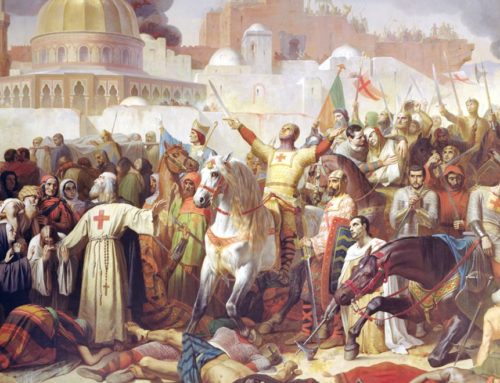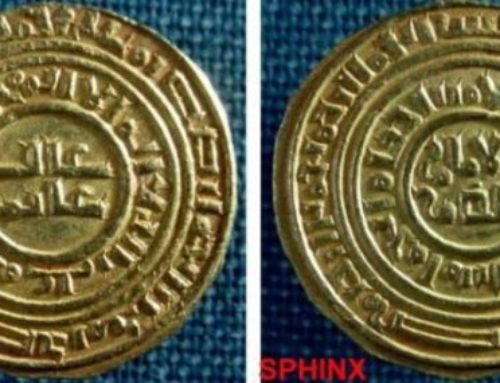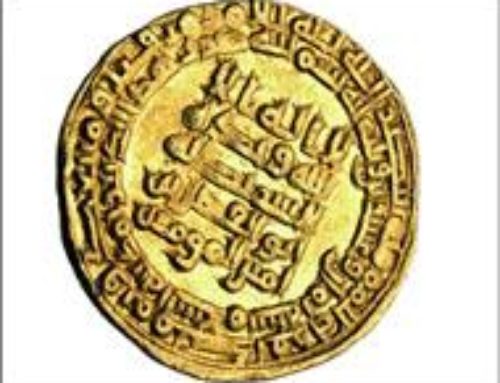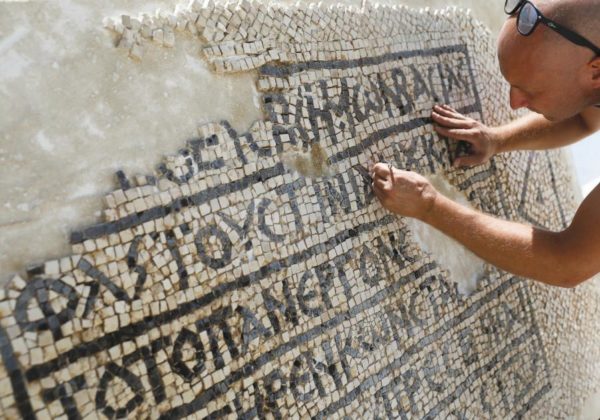
After Alexander the Great’s death, the city was captured by Ptolemy, and became a part of his kingdom in Egypt.[4] Later, in 134 BC, Jerusalem was captured by Antiochus Sidetes, and made a part of the Saluki Kingdom in Syria.[5] Sidetes laid siege to Jerusalem and only relented upon the payment of tribute from its inhabitants.[6]
The Hellenization of Jerusalem
After the Greeks took over Jerusalem under the leadership of Alexander the Great, the city underwent a rapid process of Hellenization.[7]
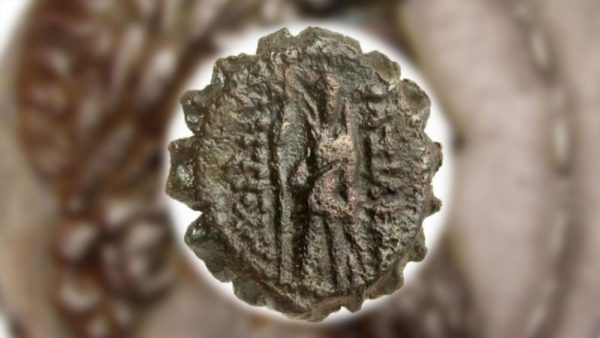
Two Warring Factions
After the death of Alexander the Great, civil war broke out in the Greek Empire. The war finally resulted in the emergence of two fighting factions; the Seleucids in the north, and the Ptolemies in the south.[12]
For the first century after Alexander’s death, the Ptolemies were in control of Jerusalem.[13] The first Ptolemy ruler of the city, called Ptolemy Soter, adopted a policy of transporting Jewish inhabitants of the city to Egypt where they adopted Greek as their native language.[14]
A century later, in 200 BC, the Seleucids, under Antiochus the third, took control of Palestine, which they held onto until [15] the Roman capture of the area in 63 BC.[16]

Jerusalem welcomed the rule of Seleucids at the beginning of their arrival to the city but in 175 BC, Antiochus IV, known as Epiphanes[17], created discontent in the city when he forced its inhabitants to pay a heavy tribute and encouraged disputes between priests and holy men in the city—particularly among the Jews.. Epiphanes’ policies regarding Hellenization were even more strict than his predecessors,and replaced the jewish priest Jason, then the leading priest of Jerusalem, with Menelaos who turned Jerusalem into a Hellenistic city [18]state and renamed it “Antiochia in Judea”.[19]
In 168 BC, while Epiphanes was preparing to invade Egypt, the Jewish population of Jerusalem conspired against him in an attempt to establish their own independent rule of Jerusalem.[20] Upon his return to the city, Epiphanes destroyed its walls,[21] took its treasures,prosecuted the Jews, and issued an edict prohibiting them from practicing Judaism and considering observance of Torah an act punishable by death.[22] He actually killed number of the Jewish inhabitants for upholding their Jewish beliefs such as observing Sabbath. This resulted in the Jewish rebellion known as the “Maccabean Revolt,”[23] after the name of their leader Judah Son of Mattathias (nicknamed Maccabee or Hammer in Hebrew).[24]
In 167 BC, the Maccabees revolted against the Greek rulers in the city that had turned their temple into a pagan temple of Jupiter and forced Jews to sacrifice to foreign gods and idols.[25] The Jews succeeded in liberating part of the city and occupied the Temple Mount[26] but the Greeks kept the Citadel[27] until 141 BC when Simon Maccabaeus[28] succeeded in reducing Greeks’ garrison.[29] Soon after this brief victory, Jerusalem was back to its Greek rulers who continued to Hellenize Jerusalem..[30] Jerusalem remained under the Greek rule, up until 63 BC when it was captured by Rome which ended the Jewish rule in the city.[31]
[1] Riad Yassin and Amjad Al-Fa’ouri, the Political and Cultural History of Jerusalem (Jordan: Dar Wael, 2012), 18 and Joseph Millis, Jerusalem: the Illustrated History of the Holy City (London: Andre Deutsch, 2012), 23 and Teddy Kollek and Moshe Pearlman, Jerusalem: a History of Forty Centuries (New York: Random House, 1968), 79 and Aref Al-Aref, History of Jerusalem (Jerusalem: Al Andalus Library, 1999 fifth edition), 33
[2] Kollek and Pearlman, a History of Forty Centuries, 85 and Karen Armstrong, Jerusalem: One City, Three Faiths (New York: Ballantine Books, 2005), 103
[3] Al-Aref, History of Jerusalem, 35
[4] Yaseen and Fa’ouri, the Political and Cultural History, 18
[5] Yaseen and Fa’ouri, the Political and Cultural History, 19
[6] Henry Cattan, Jerusalem (London: Saqi Books, 2000), 24
[7] Millis, Jerusalem, 23
[8] Kollek and Pearlman, a History of Forty Centuries, 99
[9] Al-Aref, History of Jerusalem, 39
[10] Al-Aref, History of Jerusalem, 39
[11] Millis, Jerusalem, 23
[12] Millis, Jerusalem, 23 and George E Mendenhall, “Jerusalem from 1000-63 BC”, Jerusalem in History (2000): 71
[13] Millis, Jerusalem, 23 and Armstrong, One City, Three Faiths, 105 and Habib Ghanem, Jerusalem: a History and a Cause (Lebanon: Dar Al-Manhel, 2002), 28
[14] Millis, Jerusalem, 26 and Armstrong, One City, Three Faiths, 107
[15] Mendenhall, “Jerusalem from 1000-63 BC”, 71 and one city p110 and Ghanem, Jerusalem, 28
[16] Millis, Jerusalem, 26 and Ghanem, Jerusalem, 28
[17]Kollek and Pearlman, a History of Forty Centuries, 85 and Armstrong, One City, Three Faiths, 112
[18] Mendenhall, “Jerusalem from 1000-63 BC”, 71-72
[19] Armstrong, One City, Three Faiths, 113
[20] Mendenhall, “Jerusalem from 1000-63 BC”, 72
[21] Kollek and Pearlman, a History of Forty Centuries, 85 and Ghanem, Jerusalem, 28 and Al-Aref, History of Jerusalem, 36
[22] Mendenhall, “Jerusalem from 1000-63 BC”, 72
[23] Millis, Jerusalem, 27-28
[24] Kollek and Pearlman, a History of Forty Centuries, 86
[25] Cattan, Jerusalem, 23 and Mendenhall, “Jerusalem from 1000-63 BC”, 72 and Al-Aref, History of Jerusalem, 37
[26] Kollek and Pearlman, a History of Forty Centuries, 88 and Armstrong, One City, Three Faiths, 117
[27] or the Tower of David, located near Jaffa Gate entrance on the western corner of the old city of Jerusalem. the current building dates back to the Mamluk and Ottoman eras while the foundations of the tower is way older and is believed to be built by Herod the Great
[28] or Simon Thassi, Hasmonean prince and high priest who believed to be the second son of Mattathias who was a kohen or a Jewish priest that played a key role in the Maccabean Revolt against the Greek Seleucid Empire
[29] Cattan, Jerusalem, 23
[30] Mendenhall, “Jerusalem from 1000-63 BC”, 72
[31] Cattan, Jerusalem, 24 and Al-Aref, History of Jerusalem, 39



